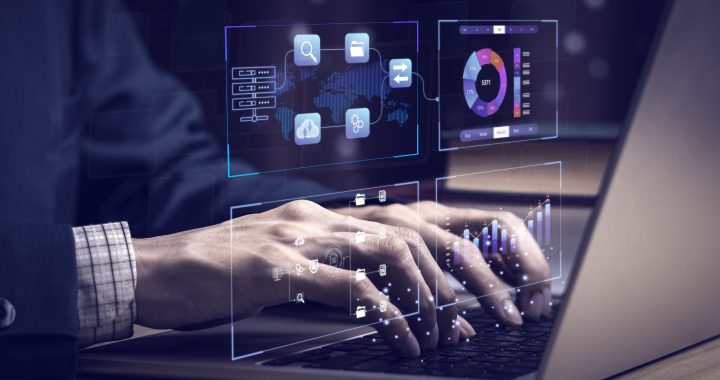In today’s digital age, software is a critical asset for organizations of all sizes. Managing software assets effectively is essential to control costs, maintain compliance, and ensure operational efficiency. Software Asset Management (SAM) encompasses the processes and strategies used to manage and optimize the purchase, deployment, maintenance, utilization, and disposal of software applications within an organization. This post outlines best practices to help your organization implement a successful SAM program.
What is Software Asset Management (SAM)?
Software Asset Management (SAM) is a set of business practices designed to manage and optimize the lifecycle of software assets. It involves tracking software licenses, ensuring compliance with licensing agreements, optimizing software usage, and managing the costs associated with software procurement and maintenance.
Why is SAM Important?
Cost Control
Effective SAM helps organizations avoid overspending on software by ensuring that they purchase only what they need and use what they have efficiently. It also helps identify unused or underused licenses that can be reallocated or eliminated.
Compliance
Maintaining compliance with software licensing agreements is crucial to avoid legal and financial penalties. SAM ensures that organizations adhere to licensing terms and can provide proof of compliance during audits.
Risk Management
SAM helps identify and mitigate risks associated with software usage, such as security vulnerabilities, non-compliance, and obsolescence. It ensures that software is up-to-date and secure, reducing the risk of cyber threats and compliance issues.
Operational Efficiency
By providing a clear view of software assets and their usage, SAM enables better decision-making, streamlined processes, and improved operational efficiency. It ensures that the right software is available to the right people at the right time.
Best Practices for Software Asset Management
1. Establish Clear Policies and Procedures
Develop and document clear policies and procedures for software asset management. This should include guidelines for software procurement, deployment, usage, maintenance, and disposal. Ensure that all employees are aware of and adhere to these policies.
2. Create a Software Inventory
Maintain a comprehensive and up-to-date inventory of all software assets. This inventory should include details such as software name, version, vendor, licensing information, installation locations, and usage data. Regularly update the inventory to reflect any changes.
3. Implement License Management Tools
Use specialized software tools to track and manage software licenses. These tools can automate the process of license tracking, ensure compliance, and provide insights into software usage. They can also alert you to upcoming renewals and potential compliance issues.
4. Conduct Regular Audits
Perform regular audits of your software assets to ensure compliance with licensing agreements and identify any discrepancies. Audits help verify the accuracy of your software inventory, identify unused or underused licenses, and ensure that all software is properly licensed.
5. Optimize Software Usage
Analyze software usage data to identify unused or underused licenses. Reallocate these licenses to where they are needed most or eliminate them to reduce costs. Ensure that software is being used efficiently and that licenses are not being wasted.
6. Manage Software Lifecycles
Develop a strategy for managing the entire lifecycle of software assets, from procurement to disposal. This includes planning for software updates, patches, and upgrades, as well as ensuring that obsolete software is properly decommissioned and removed from the environment.
7. Educate and Train Employees
Educate and train employees on the importance of software asset management and compliance. Provide training on SAM policies and procedures, as well as the proper use of software assets. Encourage a culture of compliance and responsibility.
8. Collaborate with Stakeholders
Work closely with key stakeholders, including IT, finance, procurement, and legal departments, to ensure a cohesive approach to software asset management. Collaboration ensures that all aspects of SAM are covered and that the organization is aligned in its efforts to manage software assets effectively.
9. Stay Informed About Licensing Changes
Keep abreast of changes in software licensing models and agreements. Software vendors frequently update their licensing terms, and it is essential to stay informed to ensure compliance and optimize license usage.
10. Leverage SAM Metrics and Reporting
Use SAM metrics and reporting to gain insights into your software assets and their performance. Key metrics may include license utilization rates, compliance status, cost savings from optimization efforts, and audit results. Regular reporting helps track progress and identify areas for improvement.
Conclusion
Implementing best practices for Software Asset Management is essential for controlling costs, ensuring compliance, and improving operational efficiency. By establishing clear policies, maintaining an accurate software inventory, using license management tools, and conducting regular audits, organizations can effectively manage their software assets and maximize their value. Educating employees, collaborating with stakeholders, and staying informed about licensing changes further enhance the effectiveness of a SAM program. By following these best practices, your organization can achieve a robust and efficient SAM strategy that supports its business goals and objectives.
